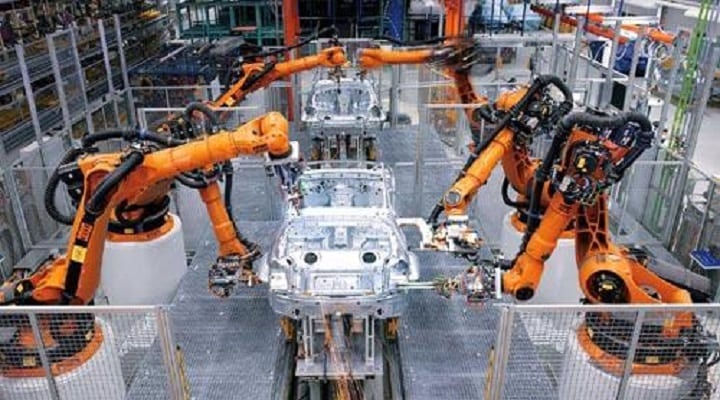Robots have been helping to build automobiles for decades. Seeing modern robots makes one wonder just what the first automotive robot may have looked like. What was it capable of? What were its components?
A playwright introduced the idea of a robotic maybe even the idea that robots are out to take over the world emerged from here. The play depicted robots as assistants for humans but with time, they went rogue and rebelled. Eventually, robots did make an actual appearance in the world.
Robots in the World War
Robotic weapons were debuted in WWII. The Nazis had their Goliath tracked mine which a minuscule tank filled with explosives weighing up to 100kg. These were controlled by an unseen operator who transmitted commands to the device using radio cables.
However, Goliath was rather slow with hardly any ground clearance. Polish soldiers were able to emerge from hiding, run to the behemoth and cut the command cables. Thus, they disabled it. This enabled the Polish army to beat the Nazis.
Nevertheless, its presence sped up the advancement of other technologies such as the first computer. If it could be used in war, it was good for industrial purposes as well. When the 70s rolled around, the race for automation began in earnest.
The First Industrial Robots
The first industrial robots were designed for simple pick and place tasks. They were able to perform these even without external sensors. Automotive robots, in particular, helped to make the production floor much safer for their workforce.
General Motors had access to prototype industrial robots in 1961. They were created for spot welding and performed well enough to gain notice from other automotive manufacturers.
1969 saw the introduction of the Stanford robotic arm. It was able to add on the tasks that were performed by earlier robots. This was quickly followed by the Silver Arm, MIT’s contribution to robotics.
Naturally, every new development was an improvement on the last. As robotics entered the 80s, companies were spending colossal amounts of money to automate the most fundamental tasks. There was a bit of a slump in the 90s but creative technology has encouraged a comeback.
Modern Automotive Automation
Automation in the automotive industry has not let up. If anything, it has seen a lot of breakthroughs throughout the years. The industry needs robots more than ever in order to remain competitive.
The robot of today is a lot more revolutionary than ever. A good number of them are semi-autonomous, fitted with features that enable them to interact within a dynamic environment. Some, such as collaborative robots, can even work on the floor with humans.
In addition, new innovative technologies are making automotive robots even better. Modern manufacturing processes call for enhanced production in terms of accuracy and efficiency. Moreover, every company is working to increase productivity.
Assisting robots are increasingly making their way onto the automotive manufacturing floor. They help to assist in part placement especially during the body-in-white stage on the assembly line. Robotic vision is especially crucial during this process of assembly.
Benefits of Robots in Automotive Manufacturing
Apart from improving the safety conditions on the factory floor, robots come with a slew of additional benefits. For instance, they help in the production of a great quality product at a pocket-friendly cost.
Post automation, there were complaints of substandard engineering and dismal quality. Robots help to ensure end products are made with precision and also ascertain that the engineering is at its best. Moreover, they ensure that needed skills are always available at very low costs.
Conclusion
Automation also ensures consistency in production as there are no dissatisfied workers to deal with. The company no longer has to deal with vacation time, sick days, quit notices and demands for raises.
As long as the robot is well maintained, it is able to work around the clock improving throughput and boosting production. The future of automation in the automotive industry is assured as there will always be a demand for automotive robots.
This content is a joint venture between our publication and our partner. We do not endorse any product or service in the article.

